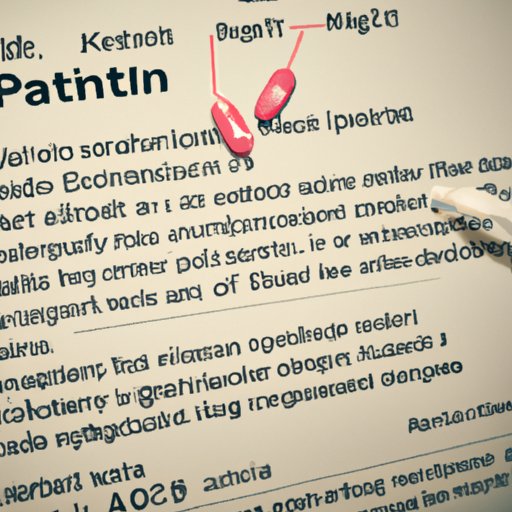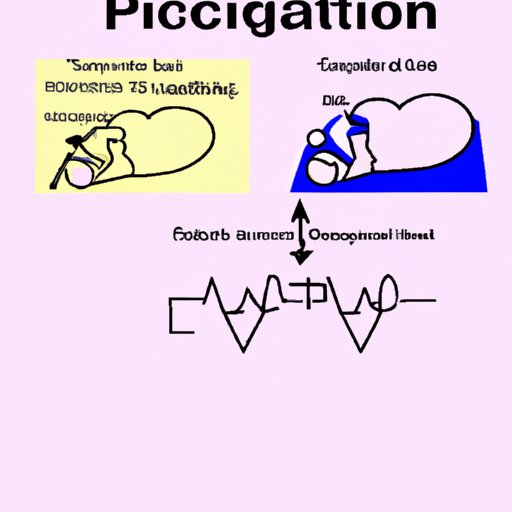Introduction
Pitocin is a medication that is commonly used during labor and delivery. It is a synthetic form of oxytocin, a hormone naturally produced by the body that stimulates uterine contractions. Pitocin is administered through an intravenous (IV) line and can be used to induce labor or strengthen existing contractions.
Labor and delivery is a complex process that involves many factors. The goal is for both the mother and baby to remain safe and healthy throughout the experience. Pitocin has traditionally been used as a tool to help ensure this outcome.

Explaining the Role of Pitocin in Labor and Delivery
Pitocin is used during labor and delivery to help the uterus contract and push the baby out. It can also be used to speed up a slow labor, or to stop bleeding after childbirth. Pitocin is administered through an IV line, which allows for accurate dosing and monitoring. During labor, the dose can be adjusted depending on the mother’s response.
When Pitocin is used, the mother may feel stronger and more frequent contractions. This can help the baby move down the birth canal and eventually out of the uterus. Pitocin can also help the placenta detach from the uterus after the baby is born.
Investigating the Effects of Pitocin on the Mother and Baby
Pitocin use during labor has both potential risks and benefits. It is important to understand how Pitocin can affect the mother and baby in order to make an informed decision about whether or not to use it.
Contractions: When Pitocin is used, the mother may experience stronger and more frequent contractions. Contractions are necessary for labor to progress, but too many or too strong of contractions can be dangerous for both the mother and baby.
Uterine Hyperstimulation: Uterine hyperstimulation is a condition in which the uterus contracts too often or too strongly. It can lead to decreased oxygen supply to the baby, which can cause problems such as fetal distress or even death.
Fetal Heart Rate Changes: Pitocin can also cause changes in the fetal heart rate. If the fetal heart rate becomes too fast or too slow, it can indicate that the baby is not getting enough oxygen, which can be dangerous.

Examining the Complexities of Administering Pitocin
Administering Pitocin is a complex process that requires careful monitoring. The dosage, timing, and monitoring must all be taken into account when using Pitocin.
Dosage: The dosage of Pitocin can vary depending on the situation. Too little Pitocin may not be effective, while too much can be dangerous.
Timing: Timing is also important when administering Pitocin. If it is given too early or too late, it may not be effective.
Monitoring: Finally, monitoring is essential when using Pitocin. The mother’s contractions and the baby’s heart rate must be monitored closely to ensure that they are responding appropriately to the medication.

Analyzing the Risks and Benefits of Pitocin
Before deciding whether or not to use Pitocin, it is important to consider the risks and benefits. While Pitocin can be beneficial in some cases, it also carries certain risks.
Possible Side Effects: Possible side effects of Pitocin include nausea, vomiting, headaches, dizziness, and low blood pressure. These side effects are usually mild, but in rare cases, more serious complications can occur.
Benefits: In addition to the possible risks, there are also several potential benefits associated with Pitocin. It can help speed up labor, reduce the risk of postpartum hemorrhage, and reduce the need for a cesarean delivery.
Comparing Pitocin to Other Induction Methods
In addition to Pitocin, there are other methods that can be used to induce labor. Some of these include stripping the membranes, using prostaglandins, and breaking the amniotic sac. Each method has its own pros and cons, and it is important to consider all of them before making a decision.
Conclusion
Pitocin is a common medication used during labor and delivery. It is a synthetic form of oxytocin, a hormone naturally produced by the body that stimulates uterine contractions. Pitocin can be used to induce labor, speed up a slow labor, or stop bleeding after childbirth. However, it can have potential risks and side effects, so it is important to discuss all options with a healthcare provider before making a decision.
(Note: Is this article not meeting your expectations? Do you have knowledge or insights to share? Unlock new opportunities and expand your reach by joining our authors team. Click Registration to join us and share your expertise with our readers.)
